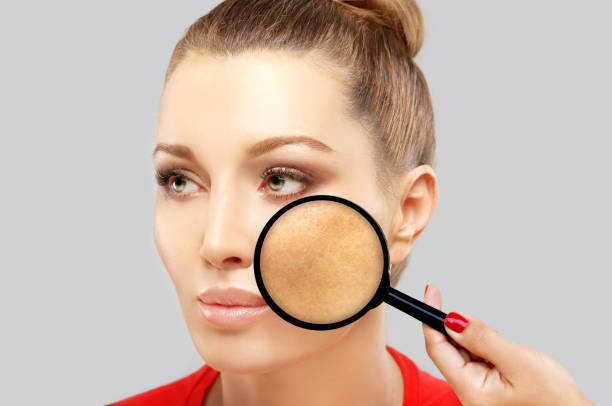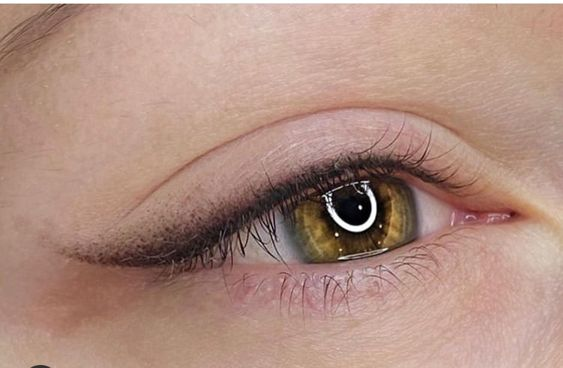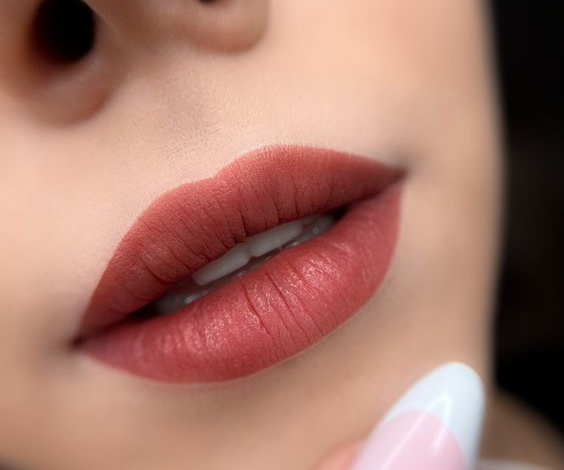
Fight Hyperpigmentation: Discover Top Skin-Brightening Ingredients | Skin Health Guide
When it comes to combatting hyperpigmentation, finding the right ingredients is pivotal. This article serves as your guide through a curated list of dermatologist-recommended components that help lighten dark spots, even out skin tone, and prevent further discoloration. Whether due to sun damage, hormonal changes, or acne scarring, hyperpigmentation can be stubborn. But fear not—ingredients such as Vitamin C, hydroquinone, and niacinamide offer a beacon of hope. Read on to unearth the secrets to an even complexion through the power of skincare science.
Understanding Hyperpigmentation: Causes and Effects

Hyperpigmentation manifests as areas of skin becoming darker than the surrounding tissue, often developing as a result of an excess production of melanin. Factors such as prolonged sun exposure, hormonal fluctuations during pregnancy or due to birth control, inflammation from acne, and certain medications can trigger this condition. Beyond its physical appearance, hyperpigmentation can take a toll on an individual’s confidence and mental health. The first step towards treatment is understanding what ingredients can help mitigate and reverse its effects.
The Skincare Arsenal: Ingredients that Fade Hyperpigmentation

To combat hyperpigmentation, certain skincare ingredients have proven especially effective in evening out skin tone and reducing dark spots. Vitamin C, a powerful antioxidant, is renowned for its ability to brighten the skin and inhibit melanin production. Hydroquinone has long been considered the gold standard for lightening hyperpigmentation, though it should be used with caution due to potential side effects.
Alpha hydroxy acids (AHAs) like glycolic and lactic acid promote cell turnover, helping to fade dark spots and reveal new, lighter skin beneath. Niacinamide, or vitamin B3, works to reduce skin discoloration while improving skin barrier function. Lastly, retinoids accelerate cellular renewal and can significantly improve the appearance of age spots and melasma over time. Incorporating these ingredients into your skincare routine, under the guidance of a dermatologist, can yield visible improvements in hyperpigmentation.
How Vitamin C Works to Brighten the Skin
Vitamin C stands at the forefront of skin-brightening ingredients. As a potent antioxidant, it neutralizes free radicals that can exacerbate pigmentation issues. When applied topically, it helps to inhibit the enzyme responsible for melanin production, leading to lighter, brighter skin over time. Additionally, Vitamin C boosts collagen production, improving skin texture and reducing the appearance of fine lines.
Debating Hydroquinone: Pros and Cons
Hydroquinone is a powerful skin-lightening agent that works by decreasing the number of melanocytes present. However, its use is subject to controversy due to concerns about potential side effects with long-term use. It is typically regulated and should only be used under the guidance of a dermatologist. When used correctly, it can provide significant improvement in the appearance of hyperpigmented skin.
Among the synthetic options for treating hyperpigmentation is hydroquinone. Though highly effective, its safety profile suggests a cautious approach, often limiting its use to short-term treatment cycles.
Here’s a table outlining the pros and cons of hydroquinone:
| Pros | Cons |
|---|---|
| Effective in reducing dark spots | Potential for skin irritation |
| Quick results | Restricted usage duration |
| Can be used on all skin types | May cause reversible skin darkening (ochronosis) on rare occasions |
Natural Remedies: Botanical Ingredients That Lighten
Natural alternatives to synthetic agents are gaining popularity in the skincare community. Two standout ingredients in this category are kojic acid, derived from mushrooms, and licorice root extract. These botanicals are applauded for their ability to lighten skin without the harsh potential side effects of their synthetic counterparts. They function by inhibiting the production of tyrosinase, an enzyme crucial to melanin synthesis.
Tips for Maximizing Results
While each of these ingredients can be potent on its own, the combination of several can offer synergistic effects that yield better outcomes. Here are two key lists to remember:
- Always patch test new products to minimize the risk of adverse reactions.
- Maintain a consistent routine, as sporadic use diminishes effectiveness.
It’s worth noting that achieving visible results requires time and dedication. Below are measures to ensure you’re getting the most out of your hyperpigmentation treatment:
- Combine ingredients thoughtfully to maximize benefits without causing skin irritation.
- Stay persistent with your regimen, understanding that results can take weeks to months.
- Seek advice from a dermatologist to customize a treatment plan to your specific needs.
Conclusion
Achieving clear, even-toned skin in the face of hyperpigmentation is a task that calls for patience and an educated approach to skincare. With a host of powerful ingredients at our disposal, significant strides can be made towards diminishing dark spots and enhancing overall skin health. By incorporating elements such as Vitamin C, hydroquinone, and protective measures like sunscreen, individuals can reclaim their skin’s natural radiance. However, it is crucial to remember the importance of sun protection and perseverance with treatments. Personalized advice from a dermatologist can further guide the journey to a brighter, even complexion.
FAQs
What is the best ingredient for hyperpigmentation?
The ideal ingredient may vary based on individual skin concerns, but the combined use of Vitamin C, hydroquinone, niacinamide, and retinoids is often recommended for effective results.
How long does it take to see results from using these ingredients?
Observing changes can take upwards of 4-6 weeks, with greater improvements expected over extended periods of regular use.
Can I use all these ingredients at the same time?
While it may be tempting to layer multiple active ingredients, it is imperative to avoid potential irritation. A dermatologist can tailor a suitable regimen, often involving a rotation of these ingredients.
Are there any side effects to using hyperpigmentation treatments?
Side effects could include redness, peeling, or irritation, notably with potent agents like retinoids or hydroquinone. Gradual introduction and patch testing can help mitigate these effects.
Can hyperpigmentation be completely cured?
Hyperpigmentation may not always be fully eradicated, but significant improvement is possible with consistent treatment. Ongoing management and diligent sun protection are key to maintaining progress.


